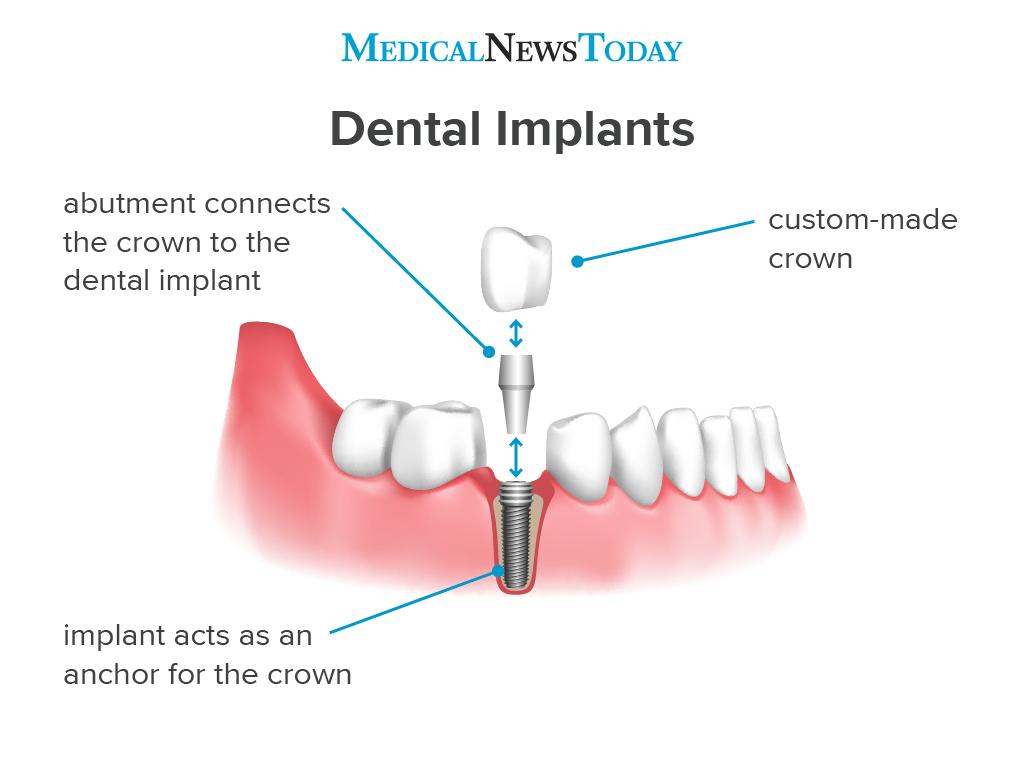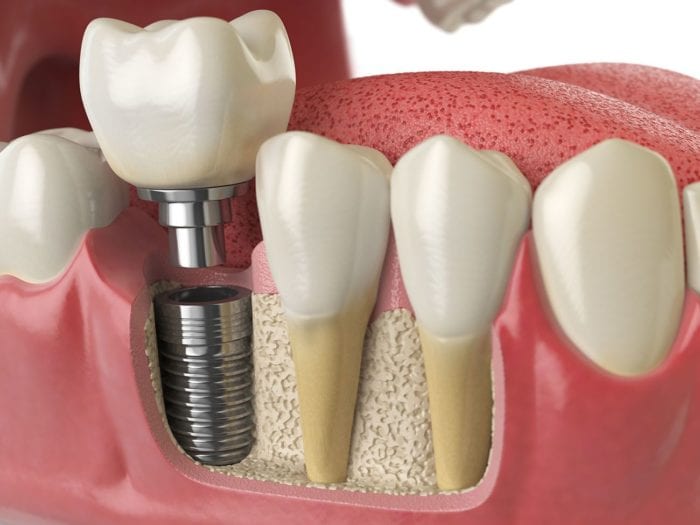A Biased View of Dental Sense
A Biased View of Dental Sense
Blog Article
Things about Dental Sense
Table of ContentsThe 6-Second Trick For Dental SenseSome Known Incorrect Statements About Dental Sense The Facts About Dental Sense RevealedRumored Buzz on Dental Sense
are medical devices operatively implanted into the jaw to recover a person's capacity to eat or their look. They give support for artificial (fake) teeth, such as crowns, bridges, or dentures. When a tooth is shed due to injury or condition, an individual can experience problems such as rapid bone loss, malfunctioning speech, or adjustments to eating patterns that lead to pain.Oral dental implant systems contain a dental implant body and oral implant joint and may additionally include a joint fixation screw. Wisdom tooth cavity. The oral implant body is surgically put in the jawbone instead of the tooth's root. The dental implant joint is normally connected to the dental implant body by the abutment fixation screw and extends through periodontals right into the mouth to support the connected fabricated teeth
(https://forums.hostsearch.com/member.php?274218-dentalsense1)Structure of The Oral Implant System selecting oral implants, speak with your oral company regarding the possible advantages and risks, and whether you are a prospect for the treatment. Points to consider: Your total health is an essential consider identifying whether you are a great candidate for oral implants, just how long it will require to recover, and for how long the dental implant might stay in place.
Smoking might impact the recovery procedure and lower the long-lasting success of the implant. The recovery procedure for the dental implant body might take several months or longer, throughout which time you commonly have a short-term abutment instead of the tooth. the oral implant procedure: Carefully follow the dental hygiene directions offered to you by your oral service provider.
The Dental Sense Diaries
Implant failure can result in the need for another operation to repair or change the implant system. Restores the capacity to eat Restores cosmetic appearance Assists keep the jawbone from reducing because of bone loss Preserves the wellness of the bordering bone and gums Helps maintain surrounding (nearby) teeth stable Improves lifestyle Damage to bordering natural teeth throughout implant positioning Injury to the surrounding cells during surgical treatment, such as sinus perforation Injury during surgical procedure (as an example, crack of surrounding jawbone) Insufficient function, such as seeming like the teeth do not bite with each other usually A feeling that the tooth is loose or twisting in position arising from an abutment screw loosening up Implant body failing (looseness of the dental implant body) as a result of systemic infection, which might be extra likely in patients with unrestrained diabetes mellitus because of regional infection in bone and periodontals supporting the dental implant body due to postponed recovery, which may be much more most likely in clients who smoke Problem cleansing the gums around the dental implant, resulting in poor oral hygiene Untreated gum illness Post-surgical pins and needles due to nerve impingement or damages Always alert health and wellness care providers and imaging professionals that you have oral implants prior to any magnetic vibration imaging (MRI) or x-ray treatments.
FDA is not knowledgeable about any adverse events reported for MRI or x-ray treatments with dental implants. Dental implants systems are usually made of materials that comply with worldwide consensus criteria of the International Company for Standardization (ISO) or ASTM International. These criteria have information of what makes a risk-free product.

A dental implant is a framework that changes a missing out on tooth. With screw-like tools, the surgeon inserts a dental implant right into the jawbone, and it acts as a support for a fabricated tooth, called a crown.
Dental Sense Can Be Fun For Anyone
Some people are not eligible for oral implant surgery. It is for oral specialists to operate people with: severe illnessuncontrollable metabolic diseasebone or soft cells disease or infectionIf these concerns are fixed, an individual visit this page can have the surgical procedure. In, oral cosmetic surgeons avoid from running on people with: If individuals with any of the above undergo oral implant surgery, there is a higher risk of the dental implant falling short.

Oral dental implant surgical procedure is an individualized process. Provide you time to heal. Connect the blog post and last crown, bridge or denture.
Next off, your doctor will very carefully put the oral implant into your jaw. If your dental implant is near the front of your mouth, your dental expert will make a short-lived tooth for you to put on until you heal.
Dental Sense Fundamentals Explained
Your supplier can inform you what to expect in your situation. During the recovery stage, your jawbone ought to fuse to the dental implant. This procedure, called osseointegration, is crucial for security and long-lasting success. This process can take anywhere from 3 to nine months. In some instances, it might take much longer.
When your dental implant heals, your dental practitioner can attach the joint (little adapter post) and your final repair (crown, bridge or denture). This usually takes concerning one hour to complete and might call for a 2nd minor surgical procedure. You shouldn't really feel any pain during your oral implant procedure because your copyright will utilize medication to numb your periodontals.
Report this page